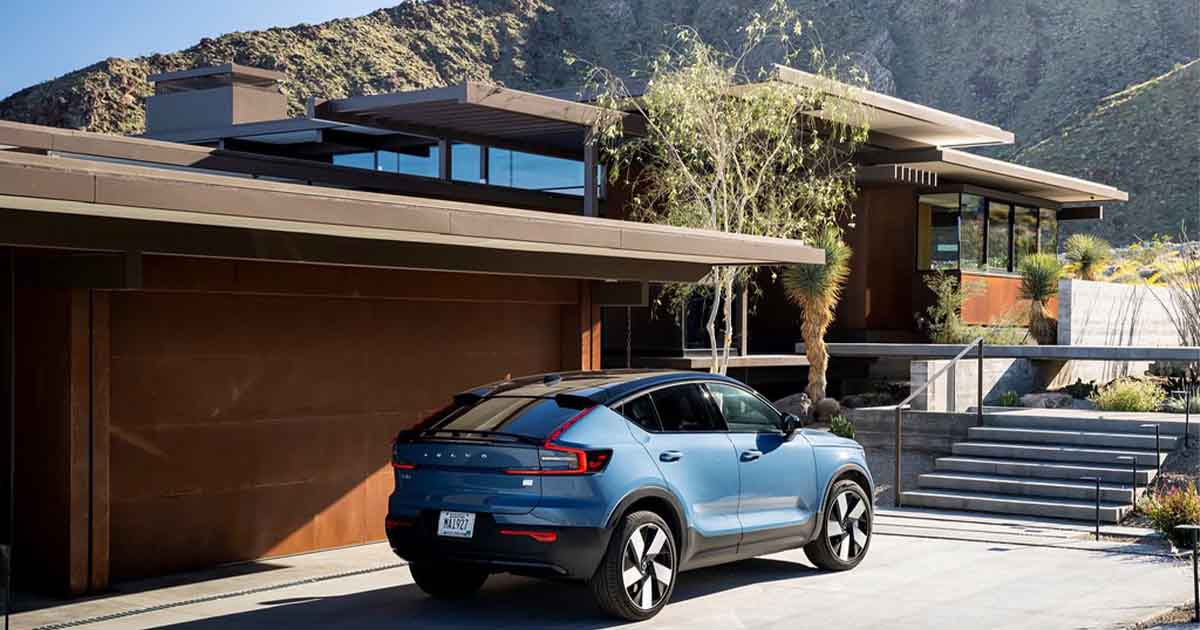How Long to Charge an Electric Car 2025? A Best Guide: Electric vehicles (EVs) have gone from the stuff of the distant future to the present in no time.
In light of growing concerns surrounding climate change and dependence on fossil fuels, the automotive industry has eagerly taken the plunge into electric mobility. EVs are now widely regarded as a cleaner, more sustainable option than traditional gasoline-powered cars, and their popularity is widely expected to skyrocket over the coming years.
With EV adoption worldwide rising, charging time has been one of the significant challenges for drivers and manufacturers alike. Unlike the straightforward process of refueling a gas-powered vehicle, charging an EV takes a few minutes to several hours, depending on the type of charger, the vehicle’s battery capacity and more. This discrepancy in charging time has made charging time a crucial consideration for the first-time purchase of new and experienced EV owners.
Thanks to breakthroughs in battery technology and charging infrastructure, EVs will be charging better and faster in 2025 than we are used to. The increasing number of fast-charging stations and the ongoing development of new technologies will make the charging process ever more convenient.
EV charging time can vary greatly depending on certain factors like vehicle model and charger type. As advancements to decrease charging time have gained momentum, we will address those aspects (and others) over the course of this guide to EV charging times in 2025.
The Growing Popularity of Electric Vehicles in 2025
The electric vehicle (EV) industry has seen incredible growth over the last few years, and 2025 will be a watershed year for the market. Many different EV models are now on sale: hatchbacks under £30k, family saloons, souped-up sports cars, and range-topping family haulers that can travel 500 miles between charges. Automakers are putting more emphasis on performance, battery life and general drivability to entice more drivers.
Government incentives, such as tax rebates and grants, to make EV prices more affordable to the average consumer are further pushing EV adoption. Simultaneously, the growth of charging infrastructure both public and private has been critical in assuaging worries of range anxiety and making EVs more practical to use.
As more people transition to electric vehicles, the rate they can charge has become a key factor in overall satisfaction. Supercharger nets were originally suggested as an extra for EVs to compensate for the longer recharge time compared to gasoline, but as technology has progressed, they can offer travel savings in time that make electric mobility a completely viable vehicle option.
Why Charging Time Matters More Than Ever
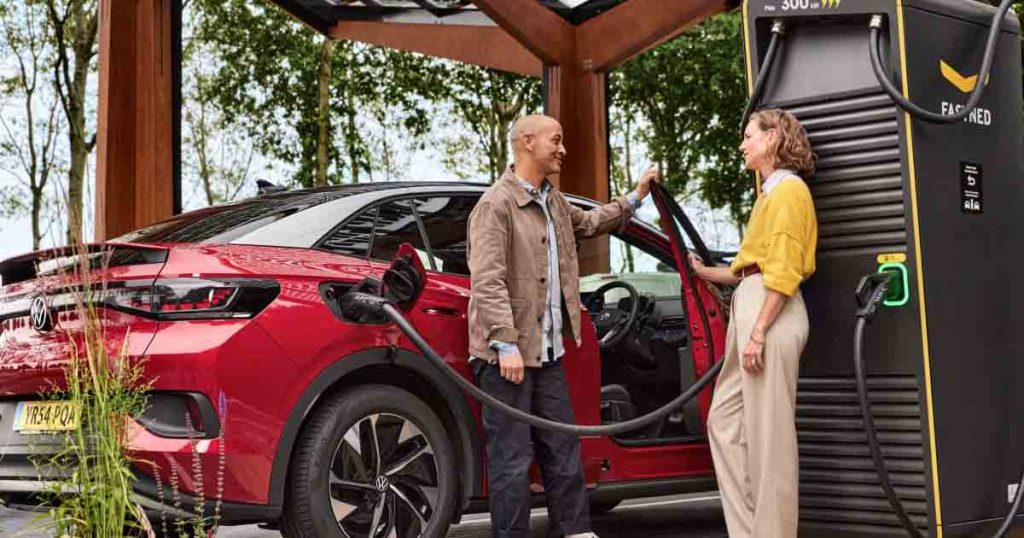
To help ease the transition to electric, charging time can be a pivotal consideration in the overall convenience of owning an EV. Unlike traditional gasoline cars, which can be refueled in a few minutes, charging electric vehicles takes much longer, with times ranging widely based on battery size, charger type and the vehicle’s capabilities. With the rise in EV adoption, there is increasing pressure to develop faster charging solutions.
The key to enabling mass EV fleet adoption is the ability to recharge an EV in the shortest possible time. Fast charging helps reduce downtime and makes electric mobility more efficient and valuable. The faster an EV can be replenished, the more functional it is for everyday use, road trips and business operations.
Consequently, facilitating fast, accessible, reliable charging has become vital for ensuring electric vehicles are a viable and sustainable alternative to traditional combustion-fueled automotive power trains.
Key Factors That Influence EV Charging Speed
A few key elements can influence charging an electric car (EV), and it all comes down to how quickly you can be at a full charge. One of the most important is battery capacity: The bigger the battery, the longer it usually takes to charge.
The charging station’s power output also makes a big difference more powerful chargers provide more electricity in less time, meaning a charge can be obtained significantly less. Also, every car has built-in limits on charging, so there is a limit to the amount of power each can safely accept from a charger, regardless of the specific charger.
Understanding these variables battery size, charger power and vehicle limits can help optimize charging sessions and get faster recharges to minimize downtime. By adapting charging behavior around such factors, maximum efficiency is achieved, making EV ownership easier.
How Charging Technology Has Evolved Over the Years
Home chargers were slow and inefficient at the time, but we haven’t looked back since as far as EV charging options go.
Level 1 chargers are the oldest and slowest available, usually taking several hours to offer a few miles of range.
Level 2 chargers are better technologies & positively affected at-home and public chargers. With the emergence of fast and ultra-fast charging in DC, there are now a host of establishments with charge points that can drive a car up to a good range in as few as 30 minutes.
By 2025, solid-state battery technology and smart grid integration will fundamentally re-architecture the way we charge. Solid-state batteries, for instance, can charge faster with improved efficiency and longer life, and smart grids can help optimize energy delivery and reduce blockage at charging stations. This ongoing maturation is leading to the quickest charge speeds ever and a ton of conveniences for EV drivers.
Read More: car financing & insurance
Understanding EV Charging: The Basics
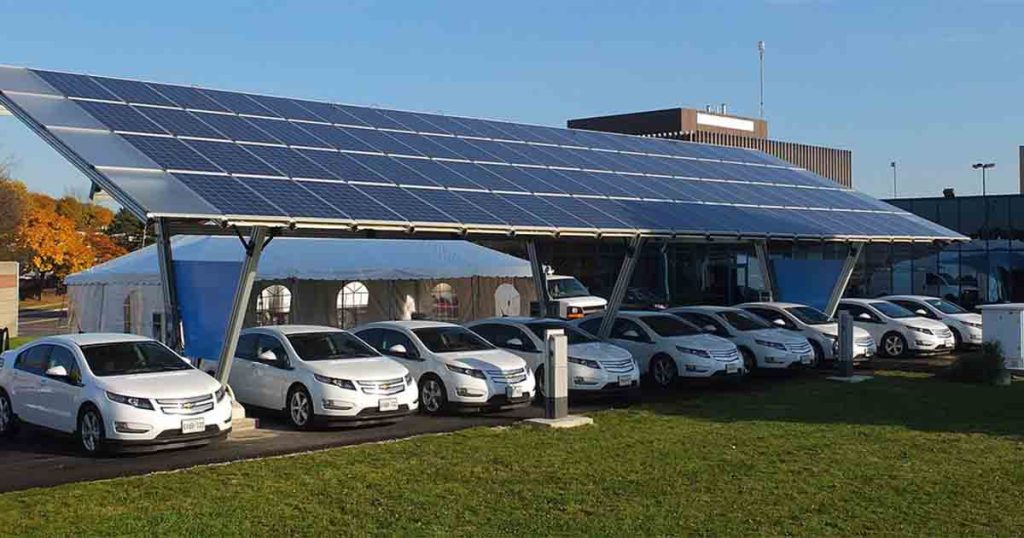
How Does an Electric Car Charge? A Simple Explanation
It charges an EV, taking electricity from an external resource and putting it inside its battery. It operates somewhat like charging a cellphone, only on an immense scale. Electricity flows from the charge into the battery when connected to a charger, and the vehicle’s onboard charging system regulates the power produced and produced. This energy is stored in the form of a battery and is then used to power the car’s motor.
Charging time for an EV comes down to the charger’s power and what the car can accept. Charging speeds will also differ, depending on a standard home outlet, a Level 2 or DC quick charger. Chargers (or “power supplies,” as the tech jargon will call them) supply a specific amount of power, dictating how quickly the battery charges. A standard home outlet (a level 1 charger) will take much longer to charge your car than a 240V level 2 or high-voltage fast charger.
The Science Behind Battery Charging: Voltage, Amperage, and Kilowatts
Charging speed depends on three basic electrical ideas: voltage (V), amperage (A) and power (kW). In an electricity system, voltage is the potential difference between the flow of electrical charge and the number of amperes of the total electricity being passed in kilowatts.
The overall speed at which a car can charge up is influenced by the voltage and amperage when charging an EV. Higher voltage pushes more energy into the battery simultaneously, while higher amperage allows much more energy to flow in simultaneously. Because DC fast chargers operate with much higher voltage and amperage than a Level 2 charger, they can fill an EV’s battery in a fraction of the time.
A regular level 2 charger operates on a 240V supply (most common) and is rated for 30-40 amps (kW = voltage × current, so ~7-10 kW). DC fast chargers, in contrast, can have output ratings of 50 kW, 150 kW, or and increasingly now up to 350 kW, which allows them to bring an EV back up to highway cruising range much quicker.
Why Charging Speed Isn’t the Same for Every EV
Charging rates vary; two EVs can be plugged into the same outlet. This difference is primarily due to each vehicle’s built-in charging limits. All EVs have a maximum charging capability, which determines how much power the EV will accept, no matter how fast the charging station can deliver it.
For example, a high-end electric car like the Tesla Model S Plaid or Lucid Air can achieve ultra-fast charge rates of over 250 kW, delivering hundreds of kilometers of range in minutes. More budget or older EV models may limit what they can charge at, so their charging speeds will remain lower whether plugged into a high-power charger.
The chemistries used in the battery also define how fast you can charge them. Different varieties of batteries lithium-ion, solid-state or other can be spiked with varying amounts of power going in. “Some EVs use complex thermal management to keep the battery from getting hot when charging to the maximum during a maximum-charging session.
In contrast, others will throttle the charge so much that it barely progresses to prevent overheating, especially as it nears the finish line. These integral limits and defenses go a long way to preserving battery life and facilitating safe charging. Will the charging speed on an EV vary from one model to another? That’s right.
Types of EV Charging and Their Estimated Times
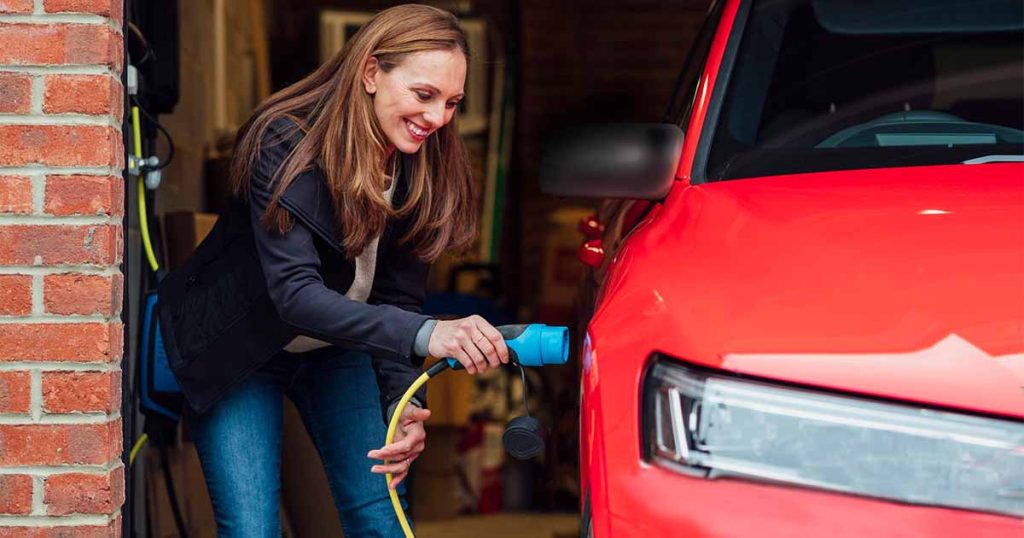
Level 1 Charging: The Slowest but Most Accessible Option
The most straightforward EV charging method is the 120V level 1 charging, which uses a regular home outlet. This is very convenient since almost all homes have a 120V outlet. The trade off is its speed of charge, however.
Level 1 charging adds only enough range to cover 2-5 miles of driving for every hour spent charging; in a pinch, it won’t help you get back on the road from empty, but it is inefficient for quick recharging. While this is adequate for overnight charging or for those with a short daily commute, it can take over 24 hours or more to charge an EV to complete 100 per cent.
So, you can gain some range throughout the day. Still, Level 1 charging is primarily a session for overnight charging, particularly for those with smaller battery-capacity EVs or who don’t rely on their EV for long-haul travel.
Level 2 Charging: The Standard Choice for Home and Public Use
Level 2 chargers are the basic for both home and public charging. At 240V, they can add an extra 12 to 60 miles of range over an hour, depending on the charger’s power output and the car’s acceptance rate.
A Level 2 (home) charger typically charges an EV in 6-8 hours, a good option for overnight charging. These Public Level 2 stations, installed in shopping centers, office buildings and parking garages, offer drivers an easy way to charge up as they go about their day. It provides the best balance between speed and accessibility, hence the most common charging solution for most EV customers.
DC Fast Charging: How It Works and How Fast It Really Is
DC fast chargers draw on that high voltage to allow vehicles to recharge faster than Level 1 and Level 2 chargers permit. These chargers wire directly to the car and provide direct current (DC) to the battery, bypassing its onboard charger and allowing it to accept power levels more significantly than its onboard charger’s capacity. According to other sources, it usually takes 30-60 minutes to charge an EV to 80% with a DC fast charger.
The highway and long trips are essential. While DC fast charging is significantly quicker than other charging methods, it does slow down as you approach a full charge. The last 20% of the SoC (state of charge) takes much longer because the BMS (battery management system) will limit the charge to protect cycling and battery health.
Ultra-Fast Charging: The Next Big Leap in EV Charging Technology
Ultra-fast charging, with chargers operating at power levels of more than 350 kW, is the next frontier of EV charging technology. Built exclusively for electric vehicles, these chargers can power up 80 per cent of an EV’s battery in 10-15 minutes, making road trips and other long-distance excursions a breeze.
Ultra-fast chargers promise to overcome one of the most significant barriers to widespread EV adoption by drastically reducing charging time. Ultra-fast charging provides quick turnaround times and increased productivity for commercial electric vehicle use cases such as electric trucks and delivery fleets.
The ultra-fast charging network is still growing, but getting re-energized along major thoroughfares has never been more convenient and downright simple and your next long road trip might prove it.
Wireless Charging: Will It Impact Charging Time?
Wireless EV charging is a new technology that allows EVs to be charged without physical cables, making it a more convenient option for charging EVs. The ground-fixed charging pad uses electromagnetic fields to transmit energy to the receiver fitted into the vehicle.
While convenient and eliminates the hassle of plugging in, wireless charging still isn’t as efficient as wired alternatives. It is less practical for people who need fast charging because the charging speed is usually slower.
With advancements in wireless technology, next-generation models may have other means of enhancing the efficiency of power transfer charging speeds. Thus, this advance might portend a bright future for EV charging stations for both home and public use. This time, it comes out in the short form ahead of charging.
How Long Does It Take to Charge an Electric Car?
Charging Time Estimates Based on Charger Type
Charging time varies considerably based on what type of charger is used. Here’s a breakdown of the typical charging time:
Level 1: 12-48 hours is the slowest charging option. It is ideal if you do most of your driving using a car that can charge overnight or drive short distances daily. It provides 2-5 miles per hour of charging.
Level 2: 4-10 hours This is the standard option for both home and public charging. It offers an acceptable charging time of 12 to 60 miles per hour.
DC Fast Charging: 30-60 min This is most suitable for quick layovers on long road trips, delivering 80% of a full charge in 30 minutes to 1 hour.
Ultra-fast charging: 10-15 minutes This is the fastest charge, up to 80% in under 15 minutes. It is also suitable for running long-distance highways.
Full Charge vs. Partial Charge: Why 80% is the Ideal Limit
Filling a battery from 80% to 100% takes a long time compared to 20% to 80%, for instance. This is because the final 20 per cent of the charge cycle generally takes longer, owing to battery chemistry and the requirement to dissipate heat.
Battery protection systems prevent charging (at elevated states of charge) to avoid overheating and damage. Even so, most experts recommend charging to around 80 per cent daily, which is a good balance between fast charging and battery longevity.
Charging Time for Popular Electric Car Models in 2025
Charging times vary widely for electric vehicles based on factors like the size of the battery and compatibility with fast-charging networks. High-performing EVs the Tesla Model S Plaid and Lucid Air charge faster because they have larger batteries and better fast-charging tech.
High-end models can reach 22% of a charge in 30 minutes with DC fast chargers, while lower-priced models will naturally take longer.
How Long Does It Take to Charge an EV From 0% to 100%?
For instance, charging from 0% to 100% takes longer than 20% to 80%. That’s because charging slows as the battery gets to higher levels of charge and even more toward when it’s fully charged. The last 20% can take twice as long to charge as the initial 80%, as battery management systems gradually taper off incoming power to be nice to the battery.
Fastest Charging EVs in 2025: Which Models Charge the Quickest?
Some EVs are infamous for how quickly it takes them to charge. Tesla’s Supercharging network is already leading the pack, with vehicles like the Model 3 charging in under 20 minutes. Another candidate to rival it is the Lucid Air Dream Edition, which has fantastic charging speeds owing to its 924V electrical architecture.
Porsche’s Tayca isn’t far behind either, and it will fast-charge from 5% to 80% in over 20 minutes. These vehicles facilitate faster, more efficient charging solutions , making long-distance EV trips much more feasible.
Factors That Affect EV Charging Time
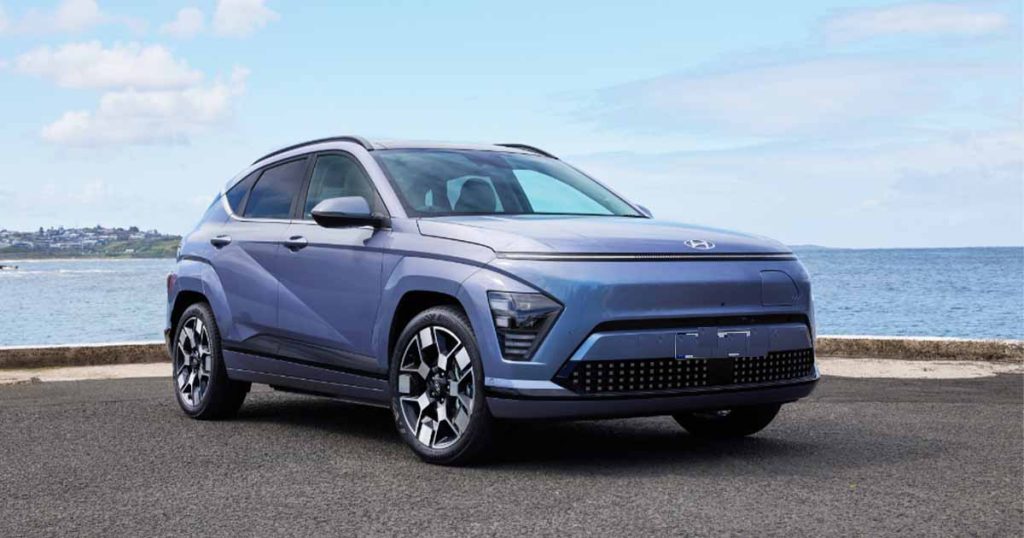
Battery Size and Capacity: How It Influences Charge Duration
Two key factors influencing EV charging time are battery size and capacity. Larger batteries provide longer driving range but take longer to charge completely. Big batteries store more energy and take a bigger hit when filling up with new power. Big batteries, in contrast, take ages to charge but give lots of range; the former is great for a trip down to the shops but a pain in the backside for longer journeys.
Charging Power Output: The Key to Faster Charging
The output of charging stations varies, influencing how quickly any given EV will recharge. They often come as high-power chargers think DC fast and ultra-fast that can pump out significantly more energy into fixed time windows, sharply cutting wait times. High-performance charging dramatically reduces charging time compared with Level 1 and Level 2 chargers.
State of Charge: Why Charging Slows Down After 80%
An electric vehicle battery management system slows the charge when it approaches full capacity to help the battery maintain its health. This throttle acts aggressively after 80% to prevent heat build-up and injury to the battery pack. This is part of what causes progress from 80% to 100% to take more time than progress from 20% to 80%.
Environmental Conditions: How Hot and Cold Weather Impacts Charging
For example, extreme weather conditions can significantly impact charging speeds. Batteries can explode if they overheat, and charging speeds are often throttled to avoid damaging the battery. Battery chemistry is less effective at lower temperatures, so the charging process is longer. In extreme climates, the guidance covers charging EVs in a shaded, temperature-controlled part of a home or commercial property, where charging will be most efficient.
Charging Curve Explained: Why Charging Is Fastest at Lower Battery Levels
Charging speeds are the highest when the battery state of charge (SOC) is close to empty — usually below 20% complete. As you fill up a battery, when you go through the process of charging it, it builds up, and its curve looks like it slows down the closer you get to the top; as soon as you start getting the battery almost filled, the curve begins to take off. That’s because how a battery is built internally means it can take more power when it’s empty and less power as it approaches a full charge. That has the effect of both lowering damage and improving battery life.
Conclusion
In short, when estimating the charging time for EVs in 2025, consider a few fairly obvious but not exclusively charger types, battery sizes, and environmental factors.
Today, EVs are a different beast altogether, with a large arsenal of chargers available thanks to the fast-paced development of charging technology, they charge to a point where they become a learned machine whose downtime is reduced, making the experience far more rewarding.
The right charging approaches and methods can translate to speedier recharges and more enjoyable journeys for drivers. With constant developments in the field, the future of electric mobility has never looked brighter, offering a seamless and effective alternative to traditional fuel cars now and in the future.
<script type="application/ld+json">
{
"@context": "https://schema.org",
"@type": "BlogPosting",
"mainEntityOfPage": {
"@type": "WebPage",
"@id": "https://cardsinspired.com/how-long-to-charge-an-electric-car-a-best-guide/"
},
"headline": "How Long to Charge an Electric Car 2025? A Best Guide.",
"image": [
"https://cardsinspired.com/wp-content/uploads/2025/03/How-Long-to-Charge-an-Electric-Car-5.jpg",
"https://cardsinspired.com/wp-content/uploads/2025/04/How-Long-to-Charge-an-Electric-Car-2-1024x538.jpg",
"https://cardsinspired.com/wp-content/uploads/2025/04/How-Long-to-Charge-an-Electric-Car-3-2-1024x538.jpg",
"https://cardsinspired.com/wp-content/uploads/2025/04/How-Long-to-Charge-an-Electric-Car-1-1024x538.jpg",
"https://cardsinspired.com/wp-content/uploads/2025/04/How-Long-to-Charge-an-Electric-Car-4.jpg"
],
"author": {
"@type": "",
"name": ""
},
"publisher": {
"@type": "Organization",
"name": "",
"logo": {
"@type": "ImageObject",
"url": ""
}
},
"datePublished": ""
}
</script>